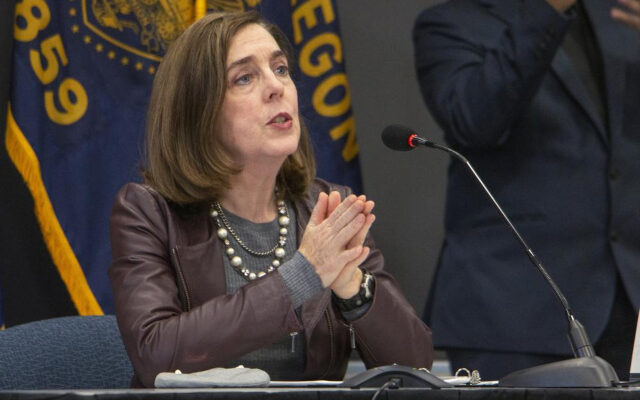Oregon Gov. Brown Delivers Final State Of The State Address

PORTLAND, Ore. (AP) — Oregon Gov. Kate Brown outlined her legislative agenda and priorities for her final year in office during her annual State of the State address on Thursday.
The Democrat, who cannot run for governor again due to term limits, said that her priorities in 2022 include preserving and creating affordable housing, preparing for and recovering from climate-related disasters, bolstering the state’s workforce and providing accessible child care.
“In my last year as governor I view every day, every moment, as one more opportunity to focus on the big and bold work we still have to do,” Brown said.
Brown’s speech also marks the start of Oregon’s 35-day legislative session. Lawmakers returned to the state Capitol on Tuesday to begin discussions on a progressive and ambitious list of spending packages and bills.
How much money will be spent during this five-week session remains to be seen as lawmakers await a revenue forecast scheduled for the second week of the session. However, Brown estimates that lawmakers could spend up to $2 billion in the upcoming five weeks.
Among spending packages that Brown has proposed is $200 million for a workforce development plan, which aims to prioritize key populations disproportionately impacted by COVID-19 and existing disparities — including Oregonians of color, women, low-income individuals, rural communities, veterans and those who are incarcerated or formerly incarcerated.
The plan includes $100 million to expand child care access to serve more families and $92 million for programs that help Oregon residents get back on their feet with no-cost construction training and career advancement support.
“We need to help Oregonians create a career ladder,” Brown said. “We need to take an entry-level job, like a Certified Nursing Assistant, and provide the skills to advance to careers in paramedicine, nursing, or health care administration.”
Brown’s largest proposed spending package this session —$400 million — is focused on affordable housing.
“You can see the housing crisis everywhere in Oregon — from Coos Bay to Ontario and back again,” she said.
The spending package includes $170 million to preserve affordable housing, $50 million to address pricing and construction gaps outside of a development’s control, $35 million to build more affordable homes for rent, $25 million for homeowner support and $500,000 for homeless infrastructure investment, such as turning motels into shelters.
“I will level with you, housing affordability and homelessness are not issues we can solve overnight,” Brown said. “This crisis has been decades in the making, and in the last two years it has only worsened due to the pandemic and natural disasters.”
Oregon must build more than 140,000 affordable homes over the next 20 years and not lose any existing homes, and more than 8,000 affordable homes are at risk over the next eight years, according to a study published by the state.
“If the housing crisis is the most pressing issue in our communities today, then climate change is the crisis that threatens our very way of life — today, tomorrow, and for generations to come,” Brown said.
During her time in office, Brown said that she has seen more extreme weather brought on by a worsening climate crisis including a historic drought, deadly heat wave, damaging forest fires, flooding and ice storms.
“The effects of every one of these extreme weather events were felt across the Oregon landscape,” Brown said. “Climate change is a hammer hitting us in the head.”
Brown became Oregon’s governor in 2015 after then-governor John Kitzhaber resigned amid an influence-peddling scandal. Brown, who was a longtime state lawmaker before becoming secretary of state in 2009, went on to win a special election in November 2016 and won reelection in November 2018. Her term ends Jan. 9, 2023.
“I have always believed that it is the governor’s job — and government’s role — to serve every Oregonian,” Brown said. “No matter who they are, where they come from or how they vote. That is our job as public servants.”
You Might Also Like



